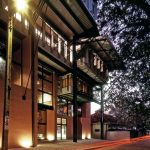-
Editorial Architecture Of Faith
July 2012

 Religion has been and is one of the most powerful and predominant forces which govern the way in which people live their lives. It is the core foundation on which communities shape themselves and transform. Cultural identity of a community is formed through the acceptance of a certain way of life, bought out by the predominant religion of that community. It is a strange unseen force that becomes the conscious and subconscious anchor which regulates the ephemeral nature of societies and the cultures within them. Architecture is the ultimate means of expression which crystallises the core facets of a community. Being so, the architecture of a community is shaped and influenced by the prevailing religion of the given region. However varied religious beliefs may be the pursuit of repelling one’s self from all evil, both thought and deeds are the unifying goal. This is why even in today’s modern, liberal societies prominence is still given to the values and beliefs of our forefathers, which have shaped the societies we know of today.
Religion has been and is one of the most powerful and predominant forces which govern the way in which people live their lives. It is the core foundation on which communities shape themselves and transform. Cultural identity of a community is formed through the acceptance of a certain way of life, bought out by the predominant religion of that community. It is a strange unseen force that becomes the conscious and subconscious anchor which regulates the ephemeral nature of societies and the cultures within them. Architecture is the ultimate means of expression which crystallises the core facets of a community. Being so, the architecture of a community is shaped and influenced by the prevailing religion of the given region. However varied religious beliefs may be the pursuit of repelling one’s self from all evil, both thought and deeds are the unifying goal. This is why even in today’s modern, liberal societies prominence is still given to the values and beliefs of our forefathers, which have shaped the societies we know of today.
The industrial revolution initiated a paradigm shift in architecture through the modernist intervention. This marked a universal change in the way built form was articulated, and the influence travelled far into each culture, influencing even the most static of traditional religious buildings. A change can be seen subtle or otherwise, collectively in many buildings of today to that of the past. This coupled with Urbanization has left little room for religious buildings to take the prominence they once did. Today the majestic Stupas, Hindu temples, Mosques and Churches are over shadowed by the overcrowded building masses.
The great creators of some of the most ancient monumental religious buildings were not architects but philosophers and master builders, trained and skilled in realising and capturing the true essence of the power that religion holds. The large volumes, gigantic structures and every incisions made on the carvings which adorns these buildings held meaning and depth that as a whole bought religion to life for the visitor. This was a skill not taught but learned through the embodiment of the religion and the result being an ultimate expression resulting only from that embodiment.
Today this task has fallen upon the modern architect, who faces many a more challenges in realising this powerful intangible force in a pristine built form. The architect must understand the core principles of the religious buildings and be creative within these principles to articulate his philosophy to realise a universal philosophy through his built formation. The architect must understand the ideals, techniques and construction methods of the past in its raw form for a successful realisation of an age old tradition. The architect must understand why it was that cultures and societies grew and revolved around religion. It is only then that a true balance of faith and architecture can be achieved.
Peshali Perera











